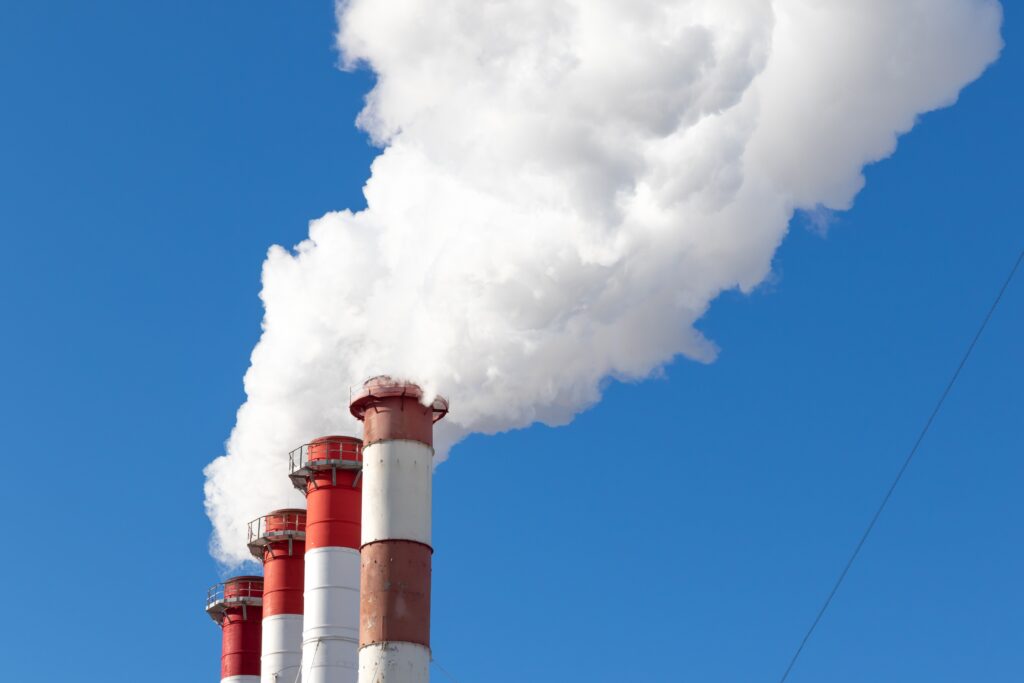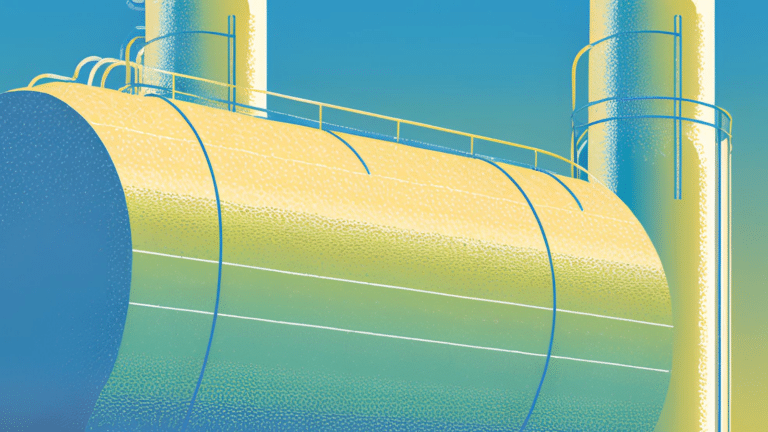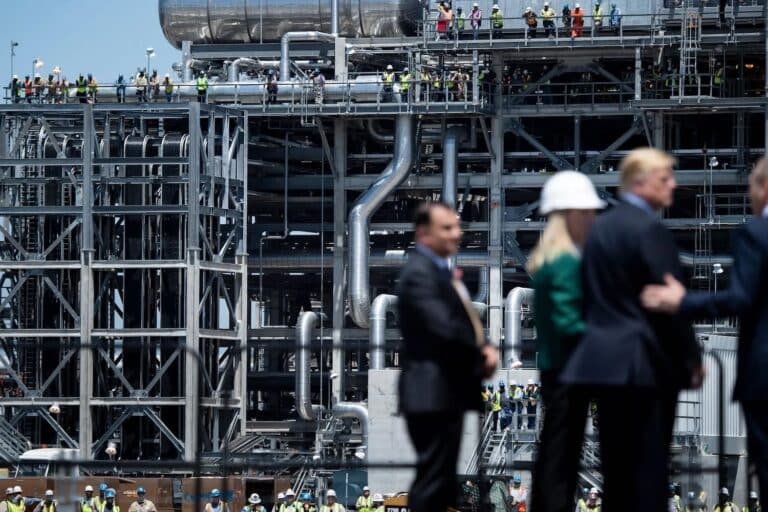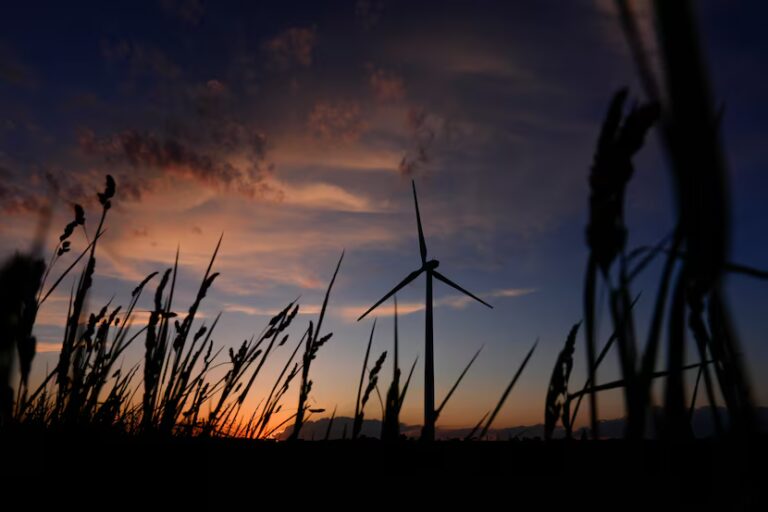Big banks predict catastrophic warming, with profit potential
Morgan Stanley, JPMorgan and an international banking group have quietly concluded that climate change will likely exceed the Paris Agreement's 2 degree
Current Access Level “I” – ID Only: CUID holders, alumni, and approved guests only
Insights from the Center on Global Energy Policy

The EU Emissions Trading System (EU ETS), created in 2005, is a key tool to orient investments toward technologies with lower carbon intensity. Like other carbon pricing mechanisms, the EU ETS is intended to induce energy efficiency investments and reduce greenhouse gas (GHG) emissions in a cost-effective manner, but the EU’s approach is evolving. Through updates to the EU ETS and the introduction of the Carbon Border Adjustment Mechanism (CBAM), the EU is aiming to shift toward a leveled playing field on carbon pricing alongside its trade partners. At the same time, in Latin America and the Caribbean (LAC), implementing and eventually expanding carbon pricing on CBAM-covered products could foster a broader transition toward low-carbon technologies, increasing growth opportunities while avoiding affordability challenges. In this article, part of an ongoing series on collaboration between the EU and LAC countries, the authors discuss how partnership on carbon pricing—beginning with the heavy industry sector—could benefit both regions.
One of the limits of the EU ETS and other European decarbonization policies has been the risk of inducing emissions increases in other parts of the world through embodied emissions in traded products, a development associated with deindustrialization of the European economy (Wood et al. 2019). “Leakages” give rise to virtual decoupling (i.e., decoupling due to the outsourcing of energy-intensive activities), or when deeper emissions reductions are observed in the European economy than when accounting integrates the effects of trade (Moreau et al. 2019).
To cut GHG emissions more effectively and to avoid deindustrialization, the European Commission has revised the EU ETS and introduced the CBAM in the “Fit for 55” package.
The revised EU ETS includes three important changes:
These changes accompany increased funding for climate change mitigation through the reallocation of revenues from carbon pricing via the Innovation Fund[3] and the Modernisation Fund[4] (European Council 2023b, European Union 2023a). [5]
The CBAM replaces earlier mechanisms established under the EU ETS to prevent the risk of carbon leakage, and is being phased in as the EU ETS free allowances (mentioned above) are being phased out (European Union 2023c). The CBAM is intended to ensure equivalent carbon pricing for imports and domestic products. The CBAM is also meant to encourage producers from third countries trading with the European Union to use technologies that are more efficient and generate fewer GHG emissions.
The mechanism was designed to comply with rules set by the World Trade Organization (WTO) (European Commission 2023a).[6] The WTO acknowledged that approach in its recent review of EU trade policy (WTO 2023a and 2023b), despite some WTO members’ calls for careful consideration of trade barrier risks posed by policies related to the European Green Deal.
The CBAM targets carbon leakage by attaching an import levy in line with the EU ETS emissions allowance price. The proposed method to calculate the CBAM is based on the carbon content of the product (including direct and indirect emissions[7]) and the difference between the EU’s carbon price and that of the trading-partner country (European Union 2023c). Reporting obligations account for the carbon price in the country of origin to avoid double taxation. From October 2023 to December 2025, data will be collected for further specifying the methodology for calculating indirect emissions. During a nine-year phase-in period (2025–34), importers will submit CBAM certificates and pay the carbon pricing differential (European Union 2023c).
A combination of policy and price developments led to recent increases in the EU carbon price (European Central Bank 2022).[8] EU carbon emission permits are now trading in the €80 to €100 per metric ton (t) range, significantly more than the €20–€30/t of the 2019–20 period and the €5–€10/t of 2011–18 (Trading economics 2023). In LAC, in contrast, carbon prices (mostly in the form of carbon taxes rather than an ETS) do not exceed US $5/t (World Bank 2023), and even then carbon taxes coexist with forms of fossil fuel subsidies, so the net effect is uncertain. This low carbon price reflects the early stage of climate policy in many emerging economies, as well as their stronger focus on other development goals, such as increased energy access and affordability.
Emerging economies, including those in the LAC region, may be reluctant to adopt carbon pricing because of worries about raising prices of goods and services, leading to affordability concerns. Redistributing revenues from carbon pricing could help manage these challenges. In the absence of new policies, the EU’s CBAM would result in a net monetary transfer from countries with low carbon prices to the EU. To avoid this development, LAC countries could start adopting policy reforms focused on CBAM-covered products to avoid or mitigate these transfers, raise revenues domestically, and use them to foster innovation and/or for redistribution. Furthermore, adopting carbon pricing for products covered by the CBAM would mainly impact business-to-business exchanges, limiting price increases for households.[9]
LAC countries could initially focus their carbon prices on CBAM-covered products exported to the EU and then expand the scope to products consumed domestically and/or traded elsewhere. Adopting carbon pricing more broadly—and reinvesting associated revenue—could foster growth built on innovation in clean energy technologies, as these are increasing in scale and decreasing in cost.
LAC countries’ responses to EU policy developments will likely depend on several factors. For example, countries may consider the direct impact of the CBAM on their exports; countries with stronger trade relationships (especially exports) for CBAM-covered products may be more likely to follow the EU, even taking a broader approach to carbon pricing, including their own adoption of carbon border adjustments. Other factors include the extent to which the CBAM will prompt LAC’s competitors to introduce carbon pricing and the extent to which the adoption of carbon pricing and CBAM-like measures will induce tensions with countries that currently export the same products to the LAC region.
According to the World Bank, goods covered by the CBAM account for less than 0.5 percent of LAC’s total exports to the EU. The main products affected are iron and steel and fertilizers (Conte Grand et al. 2022): EU countries account for 15 percent of all iron and steel exports from Brazil (Observatory of Economic Complexity 2023a), 5 percent of iron and steel exports from Costa Rica (Observatory of Economic Complexity 2023b), and 7 percent of Chile’s fertilizer exports (Observatory of Economic Complexity 2023c).
Individually, the effect of the CBAM on LAC countries may be limited. However, if LAC as a region coordinated to align with EU CBAM requirements, the share of iron and steel exports covered by carbon pricing could increase to 37 percent for Brazil (Observatory of Economic Complexity 2023a) and 84 percent for Costa Rica (Observatory of Economic Complexity 2023b). The share of fertilizer exports covered by carbon pricing could reach 72 percent in Chile (Observatory of Economic Complexity 2023c).
Broader buy-in for carbon pricing and border adjustments for products covered by the EU’s CBAM could strengthen the case for regional coordination in LAC and a further expansion of carbon pricing in other jurisdictions. For example, if Canada and the United States also adopted carbon prices and border adjustments for the products covered in the EU’s CBAM, 75 percent of iron and steel exports from Brazil and 91 percent from Costa Rica could be affected (Observatory of Economic Complexity 2023a, Observatory of Economic Complexity 2023b), and 83 percent of Chile’s fertilizer exports could be covered (Observatory of Economic Complexity 2023c).
Not responding to the European Union on the CBAM would lead to missed opportunities for LAC countries to raise and redistribute revenues, with subsequent implications for climate progress and competitiveness. Moreover, lack of convergence on carbon prices could hinder the prospects of a coalition between EU and LAC countries—a partnership that could pay dividends in other sectors, too.
With its CBAM, the EU is combining climate policy leadership and measures aimed to avoid perverse effects on its economy. For its trading partners, including LAC countries, the near-term case for adopting carbon prices stems primarily from the possibility of raising revenues that can be reinvested domestically (rather than handing them to the EU), potentially supporting their low-carbon technological transitions and helping manage equity-related implications resulting from eventual cost increases (World Bank 2023).
Embracing carbon pricing throughout the LAC region could also grant access to other incentives. For example, Germany spearheaded the launch of a “Climate Club,” intended to advance international partnerships supporting “green” transformations (Reuters 2022). Multilateral development banks (largely backed by funding from advanced economies) are boosting their investing capacity in socially, environmentally, and economically sustainable assets (G20 2022). Aligning with the EU’s CBAM could help LAC countries access funding streams that are increasingly becoming available to support investments aligned with the UN sustainable development goals, including GHG emissions reductions.
Failing to adopt carbon pricing or implementing a narrow application could sacrifice fiscal revenue in LAC countries, potentially reducing opportunities to invest in low-emission technologies. Coordination between the EU and LAC would help avoid misalignments in economic development and climate change mitigation goals. Focusing early carbon pricing efforts on products covered by the CBAM would allow LAC economies to start strategically scaling up their climate policy and technology transition, while mitigating affordability challenges.
[1] An emission allowance is the right to emit a given volume of GHG. Purchasers and suppliers trade in emissions allowances, which results in a market price for CO2 (Dutch Emissions Authority n.d.).
[2] Road transport and buildings are covered by a separate mechanism, paired with a social fund intended to address equity-related challenges (European Union 2023b). Maritime transport includes 50 percent of voyages to/from the European Union and accounts for measures to avoid the relocation of transshipment hubs (European Union 2023a).
[3] The Innovation Fund supports innovation in low-carbon technologies, carbon capture and utilization, transport and geological storage, renewable energy, and energy storage.
[4] The Modernisation Fund finances the 10 lower-income EU member states (Bulgaria, Croatia, Czechia, Estonia, Hungary, Latvia, Lithuania, Poland, Romania, and Slovakia) and is open to investments involving the yet-to-be-determined adjacent EU border regions when relevant to the energy transition.
[5] Carbon pricing policies tend not to integrate mechanisms to support progress for technologies with high potential but that are not yet cost competitive. This type of support exists in California’s Low Carbon Fuel Standard (California Air Resource Board 2023) and similar mechanisms. The approach has only recently been mimicked by EU policies that combine regulatory requirements, a carbon price floor via the ETS, a carbon price cap via noncompliance penalties (more expensive than the carbon price signal alone), and the establishment of funds dedicated to fostering innovation, financed by ETS revenues. However, these EU policies still require an effective distribution mechanism for these funds.
[6] Liebreich (2021) outlined a set of helpful principles to ensure that a Carbon Border Adjustment Mechanism remains compatible with open trade prior to the finalization of the European Commission proposal on the CBAM.
[7] Based on the implementing regulation that details the transitional reporting obligations for EU importers of CBAM goods, as well as the transitional methodology for calculating embedded emissions released during the production process of CBAM goods (European Commission 2023b).
[8] Developments include the increasing ambition of European climate policy, shrinking supply of emissions allowances, updated parameters for the Market Stability Reserve (which will further limit the amount of available emission allowances), and recent increases in gas prices, resulting in a switch to CO2-intensive coal-fired power generation.
[9] Further limitations to the risk of price increases are possible thanks to technology shifts.
California Air Resources Board (2023), Low Carbon Fuel Standard, https://ww2.arb.ca.gov/our-work/programs/low-carbon-fuel-standard
Conte Grand, M., Schulz-Antipa, P. and Rozenberg, J. (2022), Potential exposure and vulnerability to broader climate-related trade regulations: an illustration for LAC countries, Background Note 3, Country climate development report, World Bank Group, https://openknowledge.worldbank.org/server/api/core/bitstreams/bfd68288-15d3-5686-bf4f-0bbb80e9e460/content
Dutch Emissions Authority. N.d. What is emissions trading? https://www.emissionsauthority.nl/topics/what-is-emissions-trading
European Central Bank (2022), The role of speculation during the recent increase in EU emissions allowance prices, ECB Economic Bulletin, Issue 3/2022, https://www.ecb.europa.eu/pub/economic-bulletin/focus/2022/html/ecb.ebbox202203_06~ca1e9ea13e.en.html
European Commission (2023a), WTO appraises EU’s trade policy and practices, https://policy.trade.ec.europa.eu/news/wto-appraises-eus-trade-policy-and-practices-2023-06-05_en
European Commission (2023b), Commission implementing Regulation laying down the rules for the application of Regulation (EU) 2023/956 of the European Parliament and of the Council as regards reporting obligations for the purposes of the carbon border adjustment mechanism during the transitional period, https://taxation-customs.ec.europa.eu/system/files/2023-08/C_2023_5512_1_EN_ACT_part1_v6.pdf
European Council (2023a), ‘Fit for 55’: Council adopts key pieces of legislation delivering on 2030 climate targets, https://www.consilium.europa.eu/en/press/press-releases/2023/04/25/fit-for-55-council-adopts-key-pieces-of-legislation-delivering-on-2030-climate-targets/
European Council (2023b), Infographic – Fit for 55: reform of the EU emissions trading system, https://www.consilium.europa.eu/en/infographics/fit-for-55-eu-emissions-trading-system/
European Union (2023a), Directive (EU) 2023/959 of the European Parliament and of the Council of 10 May 2023 amending Directive 2003/87/EC establishing a system for greenhouse gas emission allowance trading within the Union and Decision (EU) 2015/1814 concerning the establishment and operation of a market stability reserve for the Union greenhouse gas emission trading system, https://eur-lex.europa.eu/legal-content/EN/TXT/?uri=uriserv%3AOJ.L_.2023.130.01.0134.01.ENG&toc=OJ%3AL%3A2023%3A130%3ATOC.
European Union (2023b), Regulation (EU) 2023/955 of the European Parliament and of the Council of 10 May 2023 establishing a Social Climate Fund and amending Regulation (EU) 2021/1060, https://eur-lex.europa.eu/legal-content/EN/TXT/?uri=uriserv%3AOJ.L_.2023.130.01.0001.01.ENG&toc=OJ%3AL%3A2023%3A130%3ATOC
European Union (2023c), Regulation (EU) 2023/956 of the European Parliament and of the Council of 10 May 2023 establishing a carbon border adjustment mechanism, https://eur-lex.europa.eu/legal-content/EN/TXT/?uri=uriserv%3AOJ.L_.2023.130.01.0052.01.ENG&toc=OJ%3AL%3A2023%3A130%3ATOC
G20 (2022), Boosting MDBs’ investing capacity – An Independent Review of Multilateral Development Banks’ Capital Adequacy Frameworks, https://www.dt.mef.gov.it/export/sites/sitodt/modules/documenti_it/news/news/CAF-Review-Report.pdf
Liebreich, M. (2021), Climate Action – It’s The Trade, Stupid, June 2021, https://about.bnef.com/blog/liebreich-climate-action-its-the-trade-stupid/
Moreau, V., Amarante de Oliveira Neves, C. and Vuille, F. (2019), Is decoupling a red herring? The role of structural effects and energy policies in Europe, Energy Policy Volume 128, May 2019, Pages 243-252, https://doi.org/10.1016/j.enpol.2018.12.028
Observatory of Economic Complexity (2023a), Iron & steel, https://oec.world/en/profile/hs/iron-steel
Observatory of Economic Complexity (2023b), Costa Rica, https://oec.world/en/profile/country/cri?depthSelector1=HS2Depth
Observatory of Economic Complexity (2023c), Fertilizers, https://oec.world/en/profile/hs/fertilizers
Reuters (2022), G7 establishes Climate Club to support green transition, https://www.reuters.com/business/environment/g7-establishes-climate-club-support-green-transition-2022-12-12/
Trading economics (2023), EU Carbon Permits, https://tradingeconomics.com/commodity/carbon
Wood, R., Neuhoff, K., Moran, D., Simas, M., Grubb, M. and Stadler, K. (2019), The structure, drivers and policy implications of the European carbon footprint. Climate Policy, 20:sup1, S39-S57. https://doi.org/10.1080/14693062.2019.1639489
World Bank (2023), State and Trends of Carbon Pricing 2023, https://openknowledge.worldbank.org/entities/publication/58f2a409-9bb7-4ee6-899d-be47835c838f
World Trade Organization (2023a), Trade policy review of the European Union (formerly EC) – Concluding remarks by the Chairperson, June 2023, https://www.wto.org/english/tratop_e/tpr_e/tp542_crc_e.htm
World Trade Organization (2023b), Trade policy review – European Union, Report by the Secretariat, April 2023, https://www.wto.org/english/tratop_e/tpr_e/s442_e.pdf
What is the goal of the critical minerals executive order signed by President Trump on March 20, 2025? The order[1] aims to significantly increase domestic production of critical minerals...

President Donald Trump has made energy a clear focus for his second term in the White House. Having campaigned on an “America First” platform that highlighted domestic fossil-fuel growth, the reversal of climate policies and clean energy incentives advanced by the Biden administration, and substantial tariffs on key US trading partners, he declared an “energy emergency” on his first day in office.

When the Inflation Reduction Act (IRA) was passed in August 2022, it triggered unprecedented enthusiasm among potential hydrogen suppliers.[1] More than two years later, progress on final investment...

Amid plans to nearly double its steel production capacity by 2030 to serve its growing infrastructure needs, the world’s No. 2 steel producer India[1] has released plans to...

Can U.S. gas exports throw a lifeline to Europe without raising prices at home?

The incoming Trump administration should embrace a diverse energy mix, including renewables, for the sake of economic and national security.

